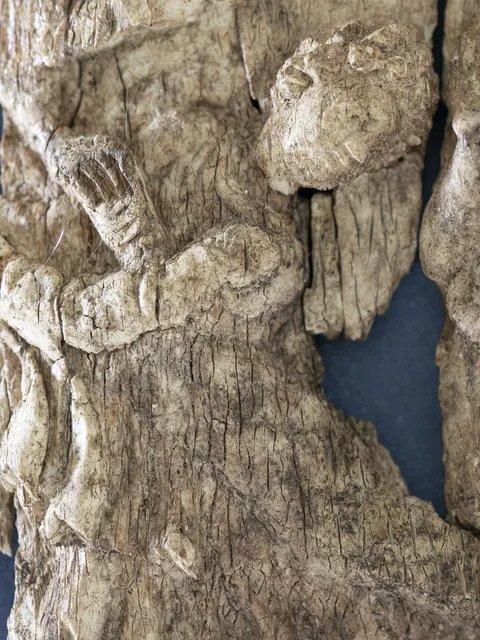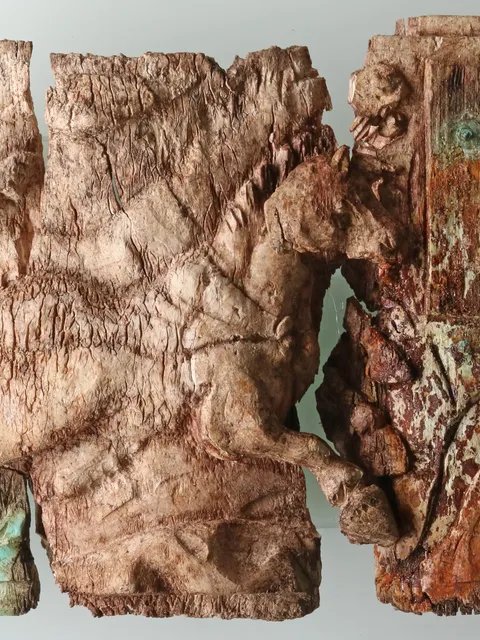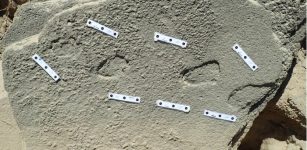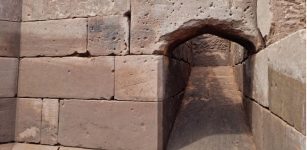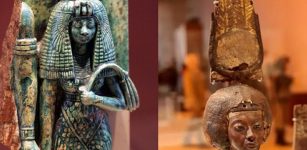1,500-Year-Old Christian Reliquary Found In An Unknown Church In Irschen, Austria
Jan Bartek - AncientPages.com - Archaeologists from Innsbruck have made a significant discovery during excavations on the Burgbichl hill in Irschen, southern Austria. The team, led by Gerald Grabherr, uncovered a previously unknown abandoned church. They found a remarkable artifact inside the building: an ancient ivory reliquary box.
Credit: University of Innsbruck
The reliquary, a pyx, was in the side chapel area beneath the altar. It was housed in a marble shrine measuring approximately 20 by 30 centimeters. Despite being heavily fragmented, the pyx exhibits intricate decorations featuring Christian motifs.
The reliquary considered the "holiest" part, is typically removed when a church is abandoned. Interestingly, in this case, it was left behind. This discovery is particularly noteworthy as it marks the first time such a pyx has been found in an archaeological context in Austria.
Credit: University of Innsbruck
“We know of around 40 ivory boxes of this kind worldwide and, as far as I know, the last time one of these was found during excavations was around 100 years ago – the few pyxes that exist are either preserved in cathedral treasures or exhibited in museums,” explains Grabherr.
Since its discovery, the 1,500-year-old, very fragile ivory reliquary has been conserved at the University of Innsbruck. “Ivory, especially ivory stored on the ground like in the marble shrine, absorbs moisture from its surroundings and is very soft and easily damaged in this state. In addition, uncontrolled drying out can lead to shrinkage and cracks and thus to damage that can no longer be repaired,” says Ulrike Töchterle, head of the restoration workshop in Innsbruck.
Unfortunately, the larger parts are deformed, which is why the pyx can no longer be restored to its original state. Nevertheless, researchers are currently developing a three-dimensional reconstruction.
Initially, the archaeologists hypothesized that the marble container might have housed the remains of a saint—a relic in the traditional sense. However, upon examination of the stratification of fragments discovered within the shrine, it has been determined that the ivory pyx had already sustained damage during late antiquity and was subsequently interred within the altar.
Close-up: Moses receives the commandments from the hand of God. Credit: University of Innsbruck
The pyx was presumably also seen as sacred and was treated as such because it was in contact with a relic. The archaeological and art-historical significance of the pyx cannot be denied,” emphasizes Grabherr.
At one end, the pyx shows a figure at the foot of a mountain. The depicted man is turning his gaze away, and a hand rises out of the sky above him, placing something between the person's arms.
“This is the typical depiction of the handing over of the laws to Moses on Mount Sinai, the beginning of the covenant between God and man from the Old Testament,” says Grabherr in a press release.
This is followed by depictions of Biblical figures. At the end, you can see a man on a chariot with two horses harnessed to it – and here, too, a hand coming out of the clouds pulls this figure up into heaven.
Close-up: Ascension of Christ on a biga. Credit: University of Innsbruck
The Irschen reliquary is currently the subject of several ongoing investigations. Restorer Ulrike Töchterle has emphasized the importance of determining the precise origin of the marble used in its construction. Scientists are employing stable isotope analyses to identify the source of the ivory and the specific elephant from which it was obtained. The metallic components, including the hinges of the pyx, are being thoroughly examined. Additionally, researchers are analyzing the glue used to affix the ivory.
See also: More Archaeology News
Interestingly, wooden elements were discovered within the marble box, likely parts of the pyx's clasp. While it is considered unlikely, the possibility that these wooden pieces could be relics has not been entirely dismissed. These wooden components are subjected to detailed analysis, with researchers particularly interested in identifying the wood type, its origin, and its age.
These comprehensive studies aim to better understand the reliquary's composition, origins, and historical significance.
Written by Jan Bartek - AncientPages.com Staff Writer



